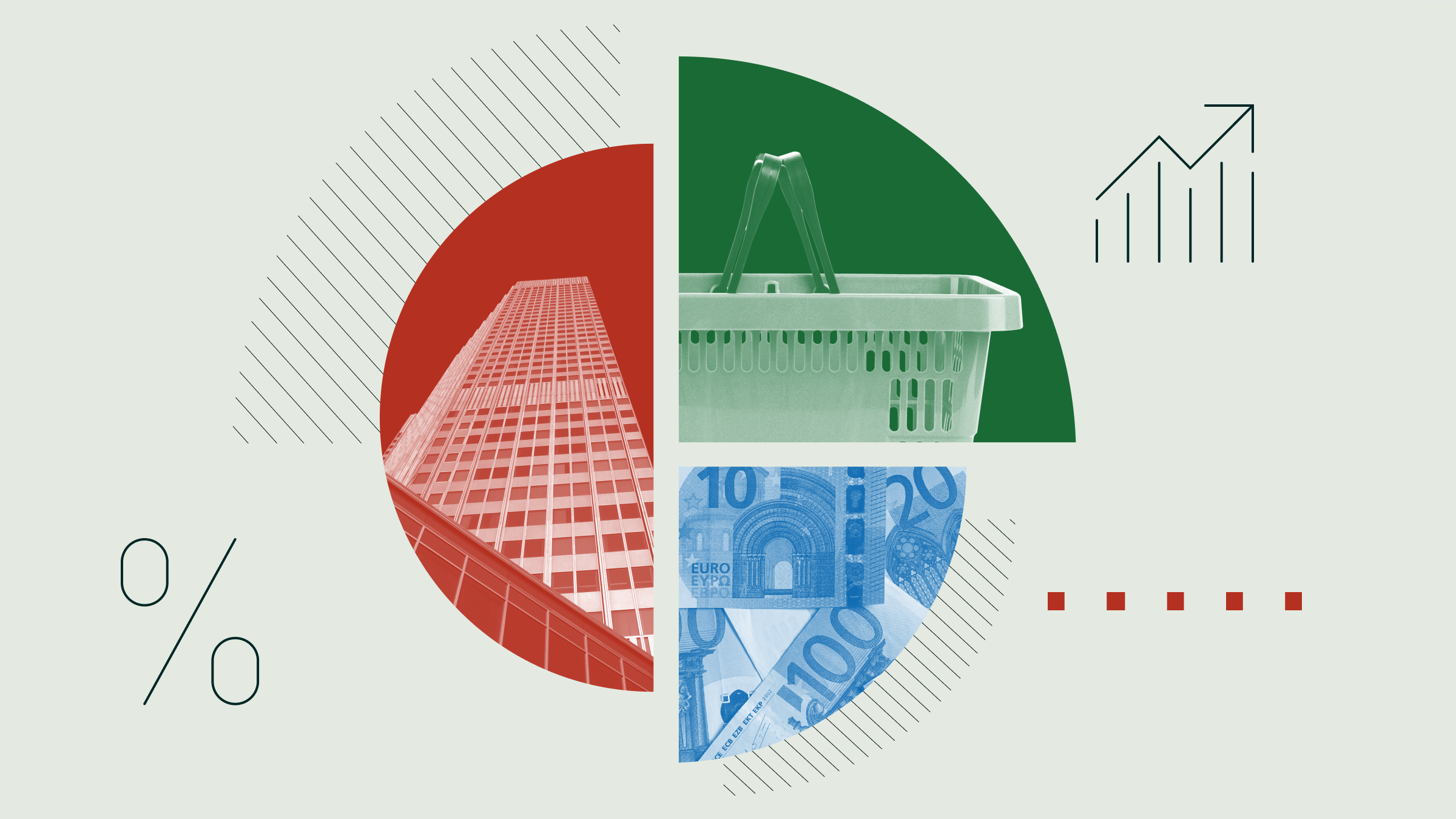Eurozone Inflation: What to Expect from March’s Data
Sara Silano - 28 March, 2025 | 12:44PM

Preliminary data on eurozone inflation for March will be released by Eurostat on April 1, amid concerns over possible US tariffs on European goods and the European Central Bank’s next moves.
Headline inflation is forecast to be 2.2% higher than March 2024 levels, according to FactSet consensus estimates, down from the February reading of 2.3% year over year.
Core inflation, which shows prices without volatile components such as energy and food costs, is expected to have risen by 2.5% year on year in March, down from February’s 2.6%.
Falling inflation will take the pressure further off the ECB to continue on their rate-cutting path, Michael Field, chief European market strategist at Morningstar, said. He added that core inflation is also getting closer to the key 2% target.
In February 2025, services inflation remained the main driver of headline inflation (HICP), with its contribution at 1.66 percentage points. The contribution of food, alcohol and tobacco stood at 0.52 percentage points, and the contribution of energy at 0.01 percentage points. Non-energy industrial goods provided a 0.14 percentage points boost.
Will Eurozone inflation reach the 2% target in 2025?
For the first quarter of 2025, Goldman Sachs sees core inflation averaging 2.56% year over year, in line with the European Central Bank’s projections released in March. Economists also expect it will cool over the upcoming months, in line with their view that wage growth starts to ease over the coming quarters.
“At the same time, we see a tick back up in the services component in April, driven by the timing of Easter, and thus remaining above the ECB’s projections for the second quarter, but broadly in line thereafter,” Goldman Sachs said on March 25.
As for headline inflation, “with energy prices notably lower than in the beginning of the year”, the economists see it “only slightly above target for the entirety of 2025.”
March flash estimates of eurozone inflation will be released on April 1, the day before US tariffs are expected to come into effect. A trade war could push up inflation by 0.5 percentage points, according to ECB President Christine Lagarde. In her speech to the European Parliament on March 20, she also said that trade frictions will have an impact on global growth, and that retaliatory tariffs and supply chain disruptions could lead to higher costs for European businesses and consumers.
What Will the ECB Do in its April meeting?
The next ECB monetary policy meeting will take place in Frankfurt on April 17, and markets are more cautious on additional cuts after the central bank reduced interest rates in March for the sixth time. The first cut of this cycle was in June 2024.
“The market adjusted its expectations and now sees the rate on deposits in the 2% area at the end of the year, up by about 20 basis points compared to estimates a month ago,” said Filippo Casagrande, chief of investments at Generali Investments. “This still implies two more cuts during the year.”
In a recent analysis, Goldman Sachs concluded that an “appropriate” ECB policy would be to lower rates in response to material US tariffs, and projected a rate cut in April.
The Economic Divergence Between the US and Europe Is Shifting Investments Toward Europe
According to Morningstar senior US economist Preston Caldwell, tariffs could push prices higher in the US in the months ahead, leading to a divergence between US and eurozone inflation.
“With the gap widening between US and European inflation, and the gap in GDP growth narrowing, European equities are being increasingly viewed as an attractive place for international investors to look,” said Morningstar’s Field, who added that the valuations are catching up with Morningstar fair value estimates. He sees “modest upside in valuation terms, but momentum is strong and investors are still ploughing funds into Europe.”
Indeed, equity ETFs data showed a change in the direction of flows in recent weeks, with a shift from US equity ETFs to Europe-focused ones.
The author or authors do not own shares in any securities mentioned in this article. Find out about Morningstar's editorial policies.